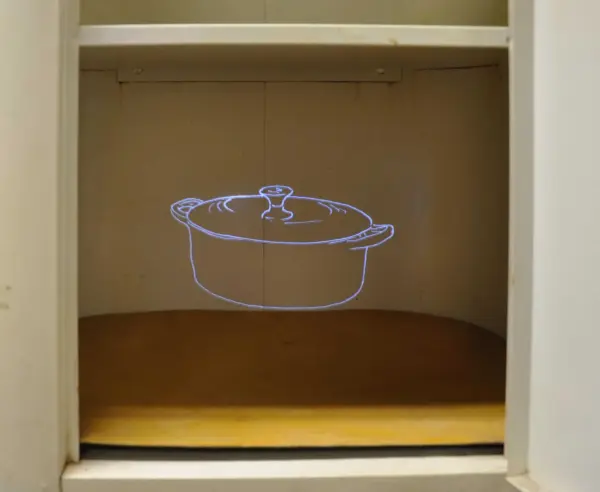how good are your dwelling places
Developed for the Koffler Gallery by guest curator Cyril Reade and presented in a former residential space, this exhibition brings together four artists who come from diverse cultural backgrounds and work in a variety of media.
In their respective practices, Rita Bakacs, Susan Lakin, Ross Racine and Allen Topolski often examine architectural and domestic environments, attempting to decode cultural specificity within a homogenizing context. Although not Jewish, the artists were invited to reflect on the fluidity of Jewish identity in North America, taking as departure points the shared experiences of community, individuality, displacement, continuity and assimilation to examine connections and differences.
The home is located at the heart of Jewish life, where daily ritual for the observant or the annual celebration of holidays transforms the domestic in symbolic ways. Often, however, very little distinguishes a Jewish neighbourhood from other developments in the same North American city, except for institutional buildings and commercial signage. This exhibition does not ask what the Jewish home might look like, given the impossibility of defining a monolithic group identity. Instead, the works attempt to trace cultural characteristics within a unifying context, using the home, figuratively speaking, as a screen.
Berlin-based Hungarian filmmaker Rita Bakacs takes us to the European origins of many North American Jews with a new video piece about the Schloss Börnicke, a former residence of the Mendelssohn-Bartholdy family situated in a Berlin suburb. The magnificent estate hosted cultural soirées, marking a history representative of the German Jewry’s contribution to European culture. Bakacs’ camera records the building’s current fragile state, echoing its tumultuous past resounding with the sometimes forced, sometimes voluntary migration of peoples.
Large waves of Jewish immigrants, entering North America with other Europeans at the turn of the twentieth century first settled in downtown areas. After Word War II, their children and subsequent generations participated in the migration to the suburbs, seeking an idealized, healthier environment. New York-based artist Ross Racine digitally renders bird’s eye views of suburban tracts, orderly and prosperous at first glance. The suggestive titles and formal aspects of these imaginary developments shape our perception of the subdivisions, revealing limited choice and lack of ecological responsibility.
Rochester photographer Susan Lakin leads us inside the home where she takes portraits of the inhabitants as a reflection in one of North America’s ubiquitous appliances, the television screen. Surrounding the television, the owners’ belongings become a cipher of the subjects’ interests, occasionally signaling a Jewish identity, though more often remaining indistinguishable from those of their neighbours, Jewish or otherwise, reflecting a North American lifestyle.
Finally, sculptor Allen Topolski transforms found domestic items, marrying the familiar and the uncanny to render them into humorously strange objects. Moving with his family into a suburban Rochester house that was formerly occupied by a Jewish family, Topolski discovered many artifacts left behind that spurred him to create works alluding to the former owners’ heritage and tastes.
The exhibition is installed in a house on Beverley Street, a couple of doors up from the childhood home of the architect Frank Gehry, born Ephraim Owen Goldberg, who recently renovated the Art Gallery of Ontario, around the corner. The row of buildings is slated for demolition and redevelopment; the inhabitants of the early twentieth century have long gone, now to be replaced by yet other residents. The works temporarily gathered in this space give a snapshot of one of the many trajectories of North American city dwellers.






